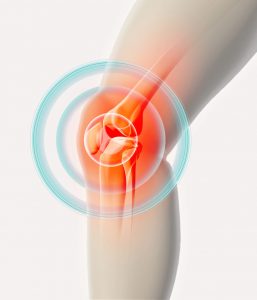You know what, without Joints, our body would be just like a fixed statue, stiff and in one piece. Only with the help of Joints, can we move, let our body work as a complex machine, and perform all kinds of various activities. But the thing, we pay the price for it. Because of our awesome functionality and how we can use our body, it is prone to getting injured time from time and the joints suffering.
That’s why most people suffer from Joint pain once in a while. Lucky if it goes away, if it doesn’t, nothing is more annoying than that dull achy sensation in the joint. However, what people don’t realise is; if dealt properly, then there’s nothing to worry about, you can beat the joint pain easily when put in the right hands!
Before getting started on interventions for Joint Pain, let me tell you a few causes of Joint Pain.
Causes of Joint Pain
1. Arthritis
Any inflammation of the joint surface from infection, autoimmune disease and poor biomechanics, destroys the articulation surface of the bones. Then it restricts the joint’s range of motion causing pain, especially when you move.

2. Subluxation
Subluxation is a temporary dislocation of the joint. When the joint goes out of its position, it impacts the surrounding tissues such as ligaments and muscles and hence causes pain.
3. Dislocation
When the two bones lose alignment to each other, it is known as a Dislocation. It injures the surrounding tissues that keep the joint intact. Due to the type of injury usually being an impact injury, the surrounding tissues become stretched, they will become weak and the joint itself becomes unstable. Therefore, the joint keeps on hurting and the surrounding tissues unbalanced and painful.
4. Inflammation of the Joint Structures
Inflammation of joint structures such as a Bursa, Fascia, ligaments, and tendons also cause joint pain. The whole joint structure is responsible for the stability of the joint so if any of the tissues surrounding the joint become unhappy and inflamed, you will experience pain.
5. Muscle Strain and Ligament Sprain
Muscles, tendons and Ligaments are the core structures of a joint that keeps it intact, in a stable position and able to move. Any injury such as a strain and sprain will make the joint unstable and cause pain.

Physiotherapy Interventions for Joint Pain
At Faye Pattison Physiotherapy & Healthcare clinic, we assess carefully and rule out which interventions fits in the most. And following are some of the interventions if you are getting treated in our Clinic.
1. Joint Manipulation
A gentle form of manipulation on the joint is applied to reduce the pain. A strong but gentle intensity of manipulation will help increase range of motion of the joint and help to stretch the surrounding soft tissues.
2. Soft Tissue Therapy
Getting stuck into the aggravated tissues surrounding the joint with a range of techniques like massage, fascial releases, neuromuscular, Muscle Energy Techniques and many more, will help releases tight muscles and areas of fascia, increase blood flow to the affected area, Increase joint range and overall speed up the healing process.
3. Stretching & Strengthening exercises
If the muscles that stabilise the joint are short or weak, they won’t be able to hold the joints in correct alignment, and the joints surface becomes more in contact aggravating each other causing pain. In the longer run, this leads to Arthritis and restricts the Joint range of motion, causing pain.
Therefore after assessing your muscle length and strength, we teach all stretching and strengthening exercises for the painful joint based in Clinic as well as a Home-based program.
4. Posture Correction
If you maintain a poor position, the joint has to undergo tremendous force from our bodyweight. The surface of the joint becomes more contact and can rub one another, leading to arthritis and causing pain.
We help you maintain correct posture through proper postural training and working on the muscles imbalances that are causing the problem. If you are suffering poor foot biomechanics, we have the answers for you and can easily rectify this with the use of orthotics.
5. Support and Braces
When the surrounding tissues get injured and weak, and the joint loses its stability, in some cases you may need extra support.
Every joint will have different supports and braces, so it is important to have good knowledge about it and to know whether it will work or not for your particular joint pain. This is where our Expert Physiotherapist and soft tissue therapists come into action, to help you with advice on choosing support and braces according to your pain and joint.
Conclusion
From this post, you have learned how the experts at Faye Pattison Physiotherapy can help you to cope with your Joint pain, reduce your pain and resolve your joint pain. So if you ever feel uncomfortable and have pain in any joint you know what to do and where to go. Contact us now at Faye Pattison Physiotherapy & Healthcare Clinic or book an appointment online.





